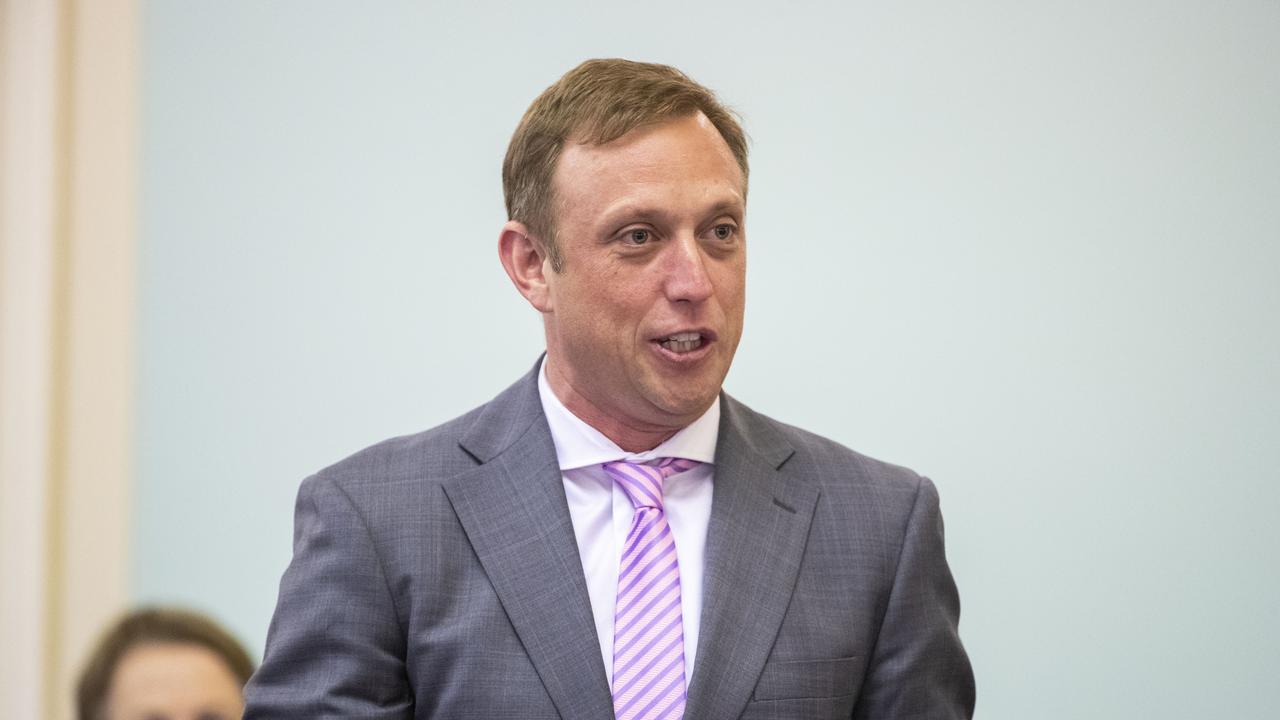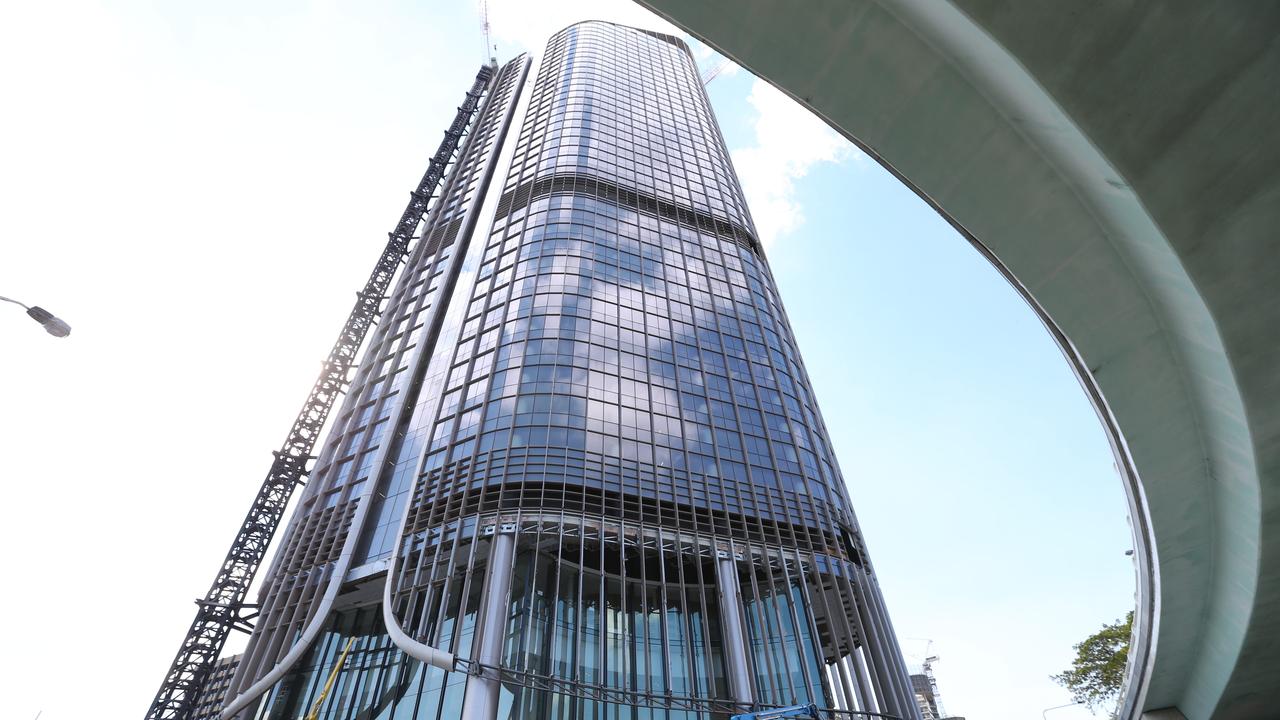Southeast Qld hospitals still full, but we’re ‘not in crisis’
Peak medical bodies say southeast Queensland hospitals are in crisis, with the region’s facilities still at capacity last night. But the Government refuses to concede it.
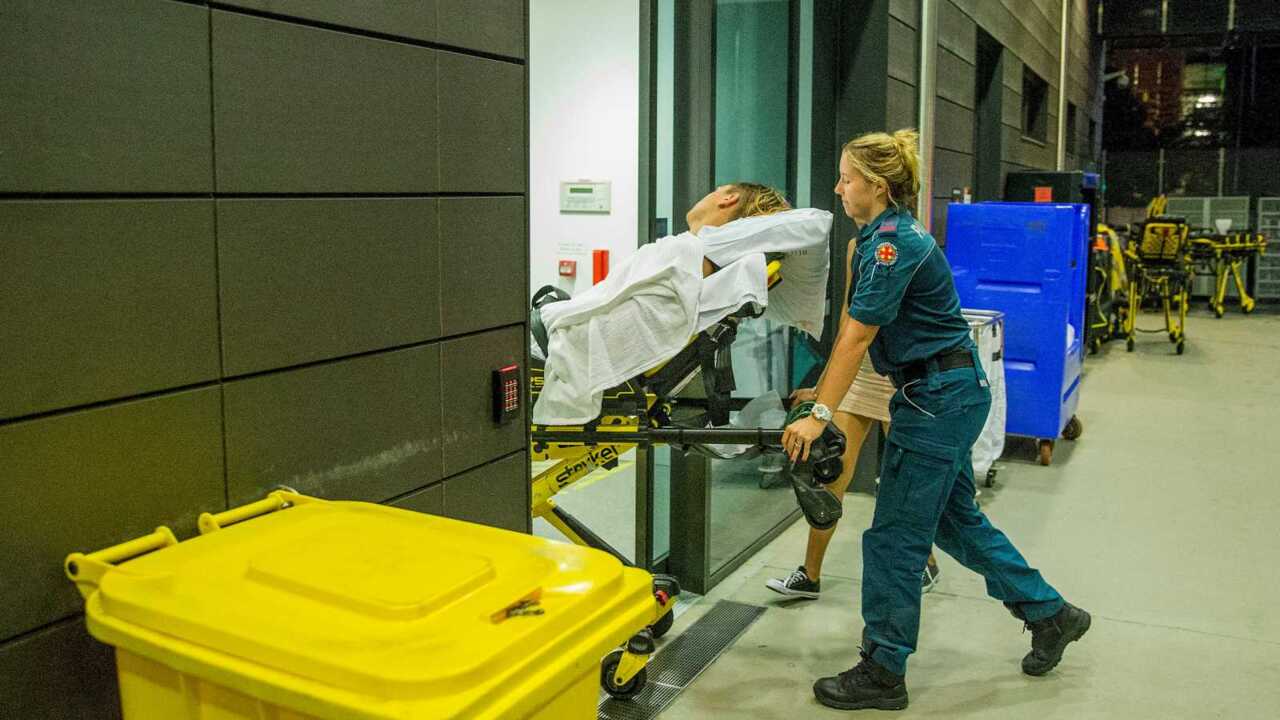
QLD Politics
Don't miss out on the headlines from QLD Politics. Followed categories will be added to My News.
PEAK medical bodies say southeast Queensland hospitals are in crisis, with the region’s facilities still at capacity last night.
More than 30 patients were ferried between public and private hospitals yesterday with “no more than” 15 elective surgeries cancelled.
Woman with endometriosis kicked out of three hospitals while in excruciating pain
Palaszczuk says feds owe state $300m
Editorial: Stop the blame game and fix this mess
Patients were turned away from some emergency departments, with one woman forced to return in an ambulance hours later, due to debilitating pain.
However the State Government steered clear of calling the emergency a crisis.
Health Minister Steven Miles claimed the $3 million funding had helped ease pressure in the 10 hospitals with EDs.
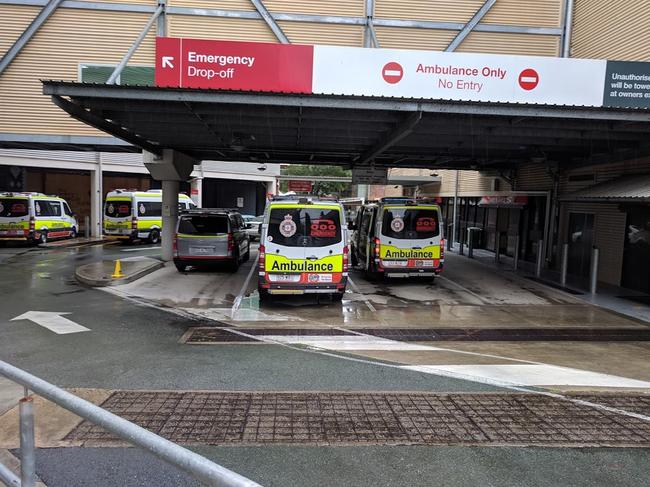
When asked whether the southeast needed another hospital, Queensland Chief Health Officer Jeannette Young said the state needed to maximise the use of current facilities.
Australasian College for Emergency Medicine president Simon Judkins said Queensland’s Metro South Hospital and Health Service — including the Logan, Redland and Princess Alexandra Hospitals — had been the subject of “a lack of focus, a lack of planning for an extended period of time”.
“Patients having to spend days in emergency departments and EDs working over capacity most of the time impacts patient morbidity,” he said.
“We know that a patient who turns up to a hospital that’s overcrowded and under-resourced results in patient deaths.
“If that’s not a crisis, I really don’t know what a crisis is. When you look at it from the outside, and you see patients lined up in hallways staying for days — that’s a crisis. It’s about time we do use that word.”
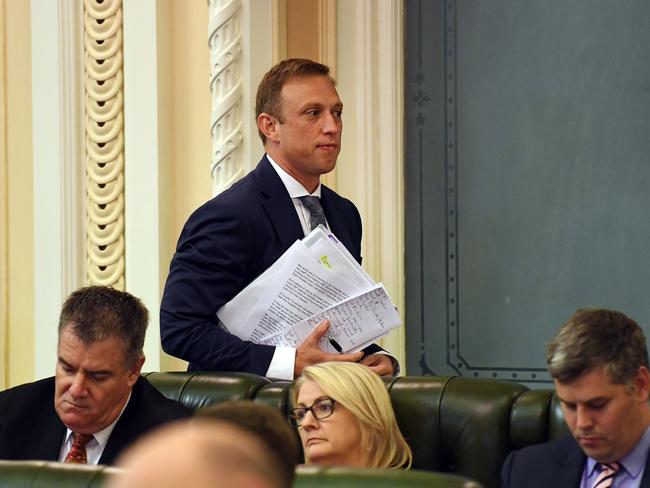
During the past three weeks, emergency department presentations grew by 10 per cent on the Gold Coast, compared to the same period in 2018.
Metro North grew by 8 per cent and Metro South grew by 6 per cent.
Mr Miles said there were still patients in non-bed treatment spaces yesterday however the number was reducing.
“We’re always concerned about winter because there’s a lot of uncertainty about what level, particularly flu cases, we will see,” he said.
“What we have determined to do as a result of this is to keep this heightened level of bed availability in place leading into winter, so the additional beds that were opened up from yesterday afternoon will continue to be available into the winter.”
Queensland Nurses and Midwives’ Union secretary Beth Mohle said the system was in crisis.
“When you’ve got no available public hospital beds in southeast Queensland, that’s a crisis,” she said.
“There’s huge demand on private hospitals too. The system is at capacity.”
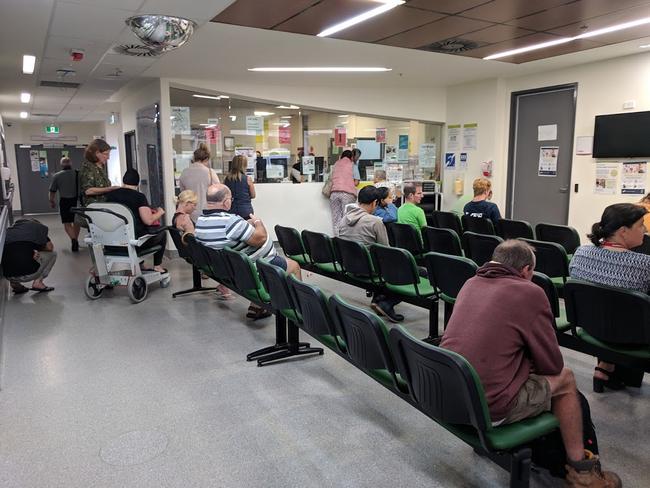
She called for new models of healthcare funding and policy changes to address the causes of the problem, focusing on community-based preventive care.
An Australian Medical Association Queensland spokesman said the body had recommended introducing a metro-wide road transfer service, ensuring patient offloading was appropriately distributed.
He said there was also a recommendation to introduce a system where hospitals alerted Mr Miles if patients were in an ED for more than 24 hours.
“This situation serves as a reminder that our emergency departments need to be appropriately resourced and supported to respond properly to community health needs.,” he said.
Ms Young was alerted to the issue that had accumulated over three weeks on Tuesday.
However when asked whether hospitals should have told her sooner, she said no.
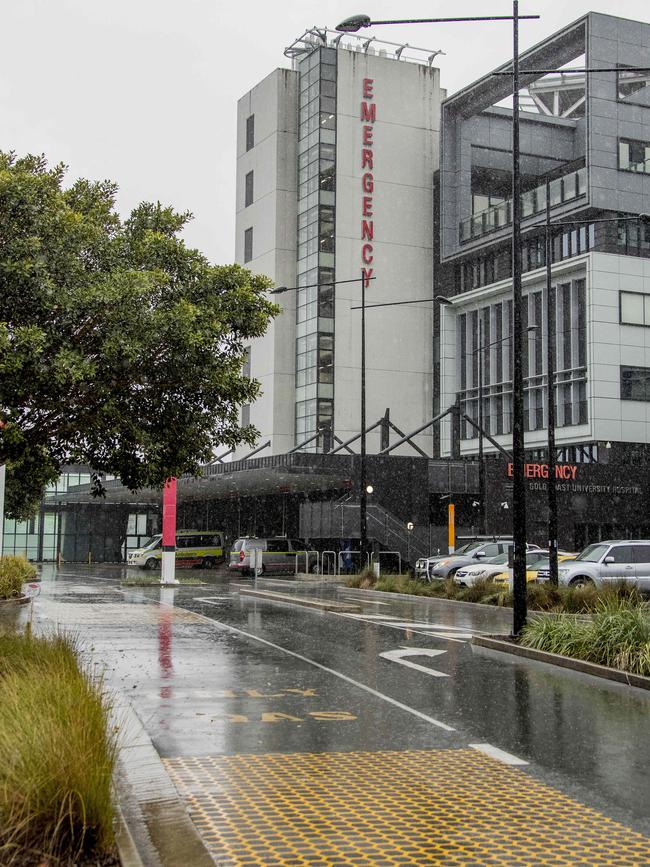
“They (hospitals) were managing it within their normal process until yesterday when it became clear that all of them were struggling to be able to manage the patients that they had,” she said.
“We’re very well practised at those strategies because we use them for every winter.
“I became aware yesterday (Tuesday) that there had been a built up of three weeks, I didn’t discuss with them three weeks ago.
“I would not expect to, these are extremely competent very effective hospital and health services.”
Opposition Leader Deb Frecklington said, “Let’s remember the people who are sitting at home today, that have been sitting on the elective wait list to get surgery, whether it’s for a knee operation”.
Nurses’ Professional Association of Queensland Executive director Graeme Haycroft said all southern region hospitals were bursting at the seams with bed shortages mostly evidenced by ambulance ramping.
“You cannot fix a problem until you have first acknowledged it,” he said.
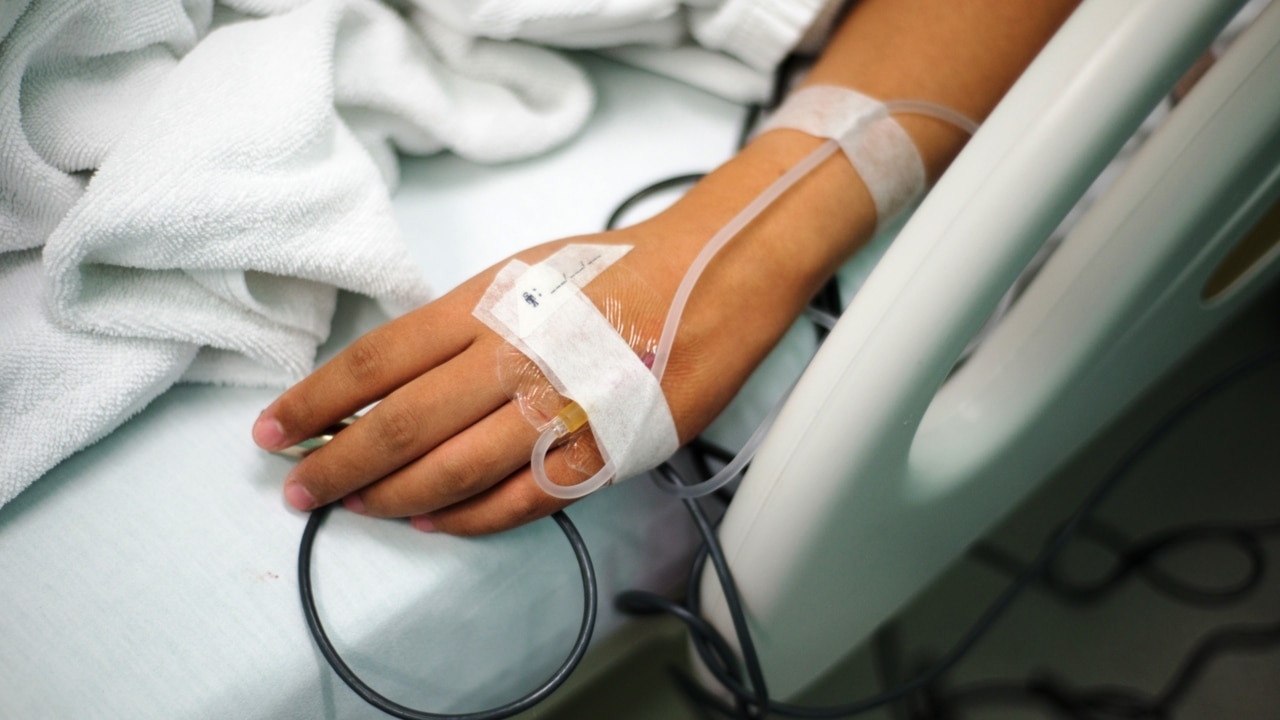
SYMPTOMS OF A CRISIS
* Sunshine Coast University Hospital and Queensland Children’s Hospital are experiencing high demand but have beds available
* One in 10 of the 670,000 Queenslanders with private health plan to cancel by April 1
* 5800 flu cases since January 1
* Gold Coast ED presentations up by 10 per cent in the past 3 weeks, Metro North presentations up by 8 per cent and Metro South up by 6 per cent
* There have been 1.3 million ED presentations statewide so far this financial year
* 8500 more ED presentations from Dec 2018 to Feb
* 1.7% increase in population growth in Queensland in 12 months to September 2018
AVERAGE NO. OF BEDS
Caboolture Hospital 227
Redcliffe Hospital 408
Royal Brisbane and Women’s Hospital 969
The Prince Charles Hospital 675
Logan Hospital 434
Princess Alexandra Hospital 900
QEII Hospital 194
Redland Hospital 187
Gold Coast University Hospital 866
Robina Hospital 346
WHAT TO DO IF YOU ARE SICK
* Don’t clog hospital system with minor ailments
* If after hours call 13HEALTH
* Find a bulk-billing doctor. The 1800 Bulk Bill website can help
* See a GP for stitches, sprains and strains, bites and stings, viruses or infections, eye injuries and prolonged illness or injury
* Phone 1300 MH CALL or 1300 64 22 55, which is a confidential mental health telephone triage service
* A pharmacist can handle minor conditions. Some are open 24hrs.
* Call 000 for an ambulance in
an emergency. Call 13 12 33 for an ambulance in non-emergencies.
* Emergency departments are meant for the seriously injured or those who need immediate medical treatment

